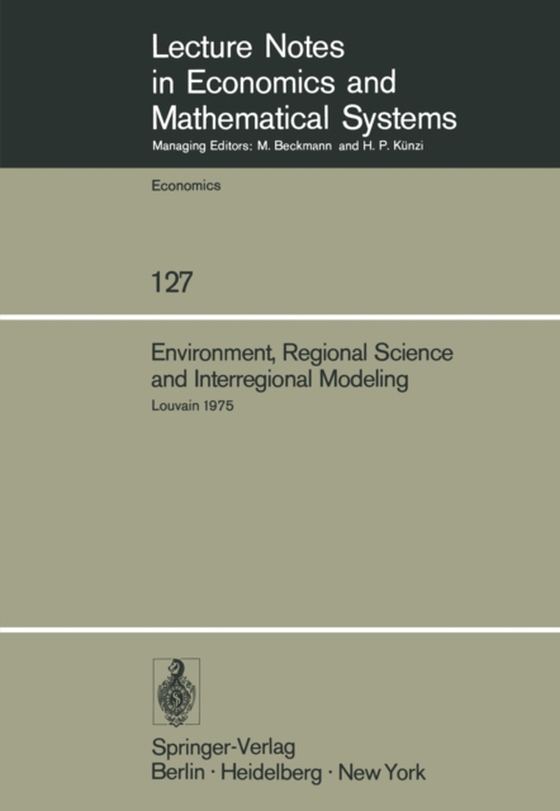
Environment, Regional Science and Interregional Modeling e-bog
436,85 DKK
(inkl. moms 546,06 DKK)
This second volume of proceedings of the International Conference on Regional Science, Energy and Environment (Louvain, May 1975) contains papers related to general and partial equilibrium models of regional and urban development, in which natural and human resources playa dominant role. It need not be stressed that environmental factors and resource management have,to some extent, been neglect...
E-bog
436,85 DKK
Forlag
Springer
Udgivet
6 december 2012
Genrer
Environmental economics
Sprog
English
Format
pdf
Beskyttelse
LCP
ISBN
9783642454882
This second volume of proceedings of the International Conference on Regional Science, Energy and Environment (Louvain, May 1975) contains papers related to general and partial equilibrium models of regional and urban development, in which natural and human resources playa dominant role. It need not be stressed that environmental factors and resource management have,to some extent, been neglected in postwar economic research. Unfortunately, a world-wide energy crisis or more local environmental disruptions were necessary to draw the economist's attention on the increasing imbalance between man and environment. The topics treated in this volume reflect the shift in economic research which has taken place since the early seventies. They can be classified roughly into 4 fields. The first field deals with a welfare approach to environmental deterioration. The second area covers models of resource allocation that contain environmental constraints. The third class of problems focuses on the relationship between environment and urban development. Finally, some methodological papers are included that explore new areas in regional and ~nterregional model building. Klaassen opens this volume with a paper on the impact of rising energy prices on the structure of regional development and environment, He analyses the change in size of all potentials and the consequent decrease in the volume of traffic. Besides these short-run influences, a :reallocat{o~ of households and firms may be expected in the long-run.
 Dansk
Dansk

